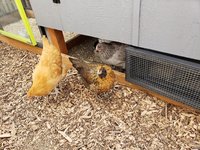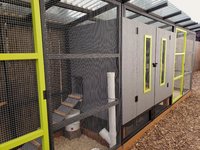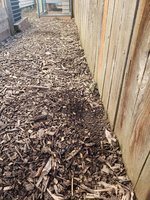aMotherDucker
In the Brooder
Check out the threads on using dried leaves. You can also add pine straw, and grass, and yard clippings. Today is my “massive coop cleaning day” I was laying in bed last night thinking about it, and thought.....what about all of these dang leaves, and pine straw I have to rake? Would it work? And sure enough, I knew I could find some info here. I LOVE BYC! You use the deep litter method. Turning and adding more as needed. Rake it out once a year, and start over. Its free, it’s natural, it’s warm, and you end up with gorgeous mulch. Duhhhh! Why didn’t I think of this sooner?!?! LOL. I’m going to pack it full after a good cleaning.


 . I have added grass clippings as well as weeds/stems/etc from the garden to the run too. A scoop of scratch thrown out once a day encourages the hens to turn everything in the run. I only have 7 hens and they made quick work of turning and breaking down the leaves, grass, sticks, etc in the run in just a week or two - my run is U shaped with the coop sitting at one end and is 30ft across and 13ft on the sides and 5ft wide all throughout. It's 230 square feet for 7 hens, and they are like a demolition crew when it comes to breaking down yard waste!
. I have added grass clippings as well as weeds/stems/etc from the garden to the run too. A scoop of scratch thrown out once a day encourages the hens to turn everything in the run. I only have 7 hens and they made quick work of turning and breaking down the leaves, grass, sticks, etc in the run in just a week or two - my run is U shaped with the coop sitting at one end and is 30ft across and 13ft on the sides and 5ft wide all throughout. It's 230 square feet for 7 hens, and they are like a demolition crew when it comes to breaking down yard waste! 

 up these suggestions. There will be forest nearby, does anyone have thoughts about using dry(ish) forest litter?
up these suggestions. There will be forest nearby, does anyone have thoughts about using dry(ish) forest litter?



